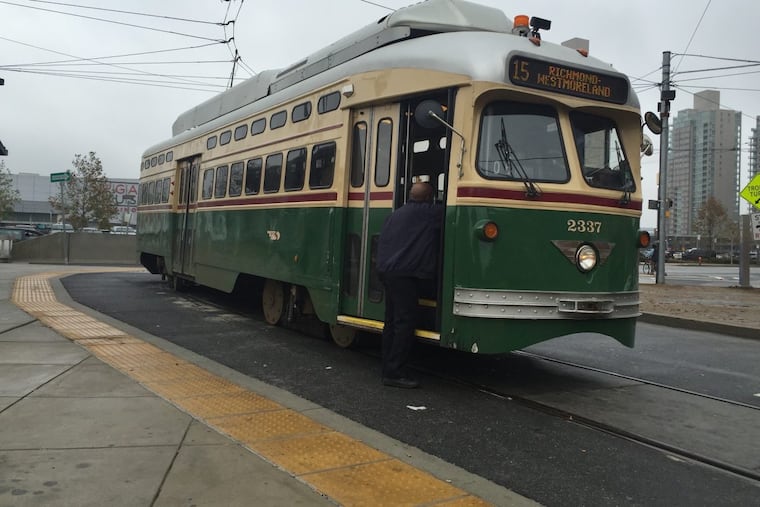A future for the Route 15 trolley? | Editorial
SEPTA has temporarily suspended Route 15 trolley service and says it will run buses while the vintage fleet of classic cars on the line are repaired. The move is popular with trolley lovers. But is it the best way to go for mass transit?

SEPTA pulled the last four Route 15 trolley cars out of service Sunday and says it plans to have the line’s vintage fleet of 18 electric vehicles overhauled and rolling again in 2021. Until then, SEPTA buses will serve the crosstown line’s 8,700 daily riders, many of whom live in neighborhoods along the 8.4-mile stretch of Girard Avenue between West Philly and Port Richmond.
The resumption of trolley service in 2005 may well have played a role in the avenue’s resurgent vitality, but the future of this important piece of SEPTA’s intra-city network matters not only to neighborhood residents, or to trolley buffs who love Route 15′s classic rolling stock. Dependable mass transit is fundamental for a city facing issues of persistent poverty, income inequality, and gentrification, as well as to an entire region wrestling with the economic and environmental impacts of traffic congestion.
What happens to the Route 15 matters to SEPTA, too. The love-to-hate-it agency generally has done a better job promoting and providing at least some of its essential services in recent years. But SEPTA certainly failed to adequately communicate its intentions after news of the imminent end of trolley service broke Jan. 21, sparking a “Fix the 15” petition drive by 5th Square, self-described as Philly’s urbanist political action committee. Concerns among riders and other transit supporters, some with memories of the abrupt end of trolley service on the beloved 23 line to Chestnut Hill in 1992, were only somewhat allayed during a packed SEPTA meeting last week.
Many people treasure the vintage trolleys; the same so-called PCC II cars that have been running on Girard Avenue are tourist attractions in other cities. But this line has little to do with tourism and everything to do with getting local people where they need to go. The cars were built in the late 1940s and rebuilt in 2002 as part of a $88 million project. The cost of the latest rehab, expected to extend the life of the cars by 10 years, is not yet known. By then, a $1.3 billion proposal to modernize the entire trolley system inside and outside the city should be finalized.
» READ MORE: Debating Philly’s iconic trolley system: Time for an expansion? Pro/Con | Opinion
» READ MORE: SEPTA’s trolley tunnel closing for repairs, affecting more than 60,000 riders on nation’s largest system
But it’s worth asking whether it makes sense to pour more money into the PCC II trolleys simply to get them back in service for another 10 years. The fact that only four cars were still in use, with the rest of the fleet described as unable to pass state and local inspections, raises real questions about whether costly repairs will be needed.
SEPTA recently began rethinking some of the fundamentals of its bus routes, issuing a blueprint in 2018 for overhauling the transit authority’s bus network in the face of declining ridership and increased competition from other transportation providers like Uber. In fact, one of the recommendations in the blueprint called for replacing the 15 trolley with a bus route. So why tinker with the novelty trolleys if bus service is a better alternative for the long run? That question deserves an answer, not only for nostalgia buffs and transit fans but for the people who depend on having reliable service on Route 15.